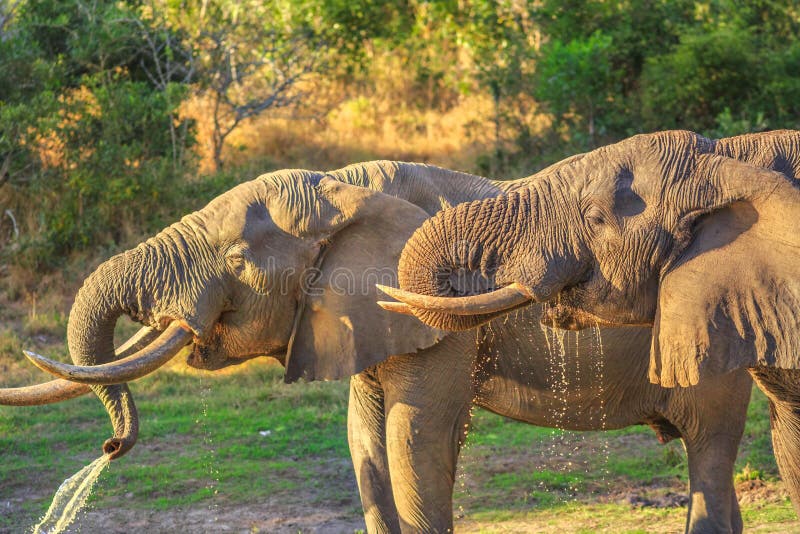

Slowly, royally, a magnificent tusker moves out from behind a clump of bushes to drink from the pan. Occasionally the peaceful scene is disturbed by two or more of the younger bulls mock-fighting and testing one another’s strength with heads held high and tusks and trunks interlocked, sending nervous nyalas and impalas running for cover…

It’s mid-afternoon at Tembe Elephant Park, and we’re watching a number of elephant bulls milling around Mahlasela Pan. Not a great photo, but a memorable experience! Sadly, Valli died in December 2017 following a fight with a younger bull.

We saw Valli in bad light one afternoon in May 2010 while visiting Addo. He was named after then Minister of Environment and Tourism, Mohammed Valli Moosa. Valli was one of the bulls that moved to Addo from Kruger. In order to address this, Park management translocated eight mature bulls from the Kruger National Park to introduce new genes into the pool in 20. Addo’s elephants have responded wonderfully to the protection they’ve been afforded since the Park’s proclamation, and today number over 600! The population had an interesting trait however, due to hunting and the small founder population, in that the bulls had only small tusks and the cows had none at all.

With the proclamation of the Addo Elephant National Park in 1931, only 11 African Elephants remained in the Addo district. Owing to their special status, they are given names by the Park authorities, often according to specific areas they roam or characteristic physical features or in remembrance of rangers or other members of staff that dedicated their lives to the Park.Īllow us to celebrate these magnificent creatures on World Elephant Day by sharing some of our encounters with Tuskers from four of our Parks with you. There are only a handful of these enigmatic animals on the continent, and they are living monuments to those who protect our wild places for generations to come. One of our greatest joys when visiting South Africa’s wild places is being treated to an encounter with a real “Tusker” a majestic elephant bull carrying massive ivory. South Africa has a growing population of almost 27,000 elephants (2015 estimate), but we have not been entirely isolated from the poaching happening on a larger scale in several other African countries. With an estimated 100 African elephants killed daily for the illegal ivory trade in Asian markets, their population is in rapid decline. World Elephant Day was launched in 2012, to bring attention to the plight of these iconic animals, and has been observed annually since. The 12th of August annually is celebrated as World Elephant Day. Elephants in Africa and Asia are faced with the threats of escalating poaching, habitat loss and various other conflicts with humans. Elephants are a big drawcard for visitors to our parks and reserves, being charismatic animals and members of the famed “ Big 5”. For us too, encountering elephants is always a special treat: witnessing the interactions between different herd members or the playful antics of the calves, and there’s few things in nature as beautiful as the gait of a confident elephant bull, his massive head swaying from side to side, intent on ensuring anything and everything in his way clears out before he gets there.


 0 kommentar(er)
0 kommentar(er)
